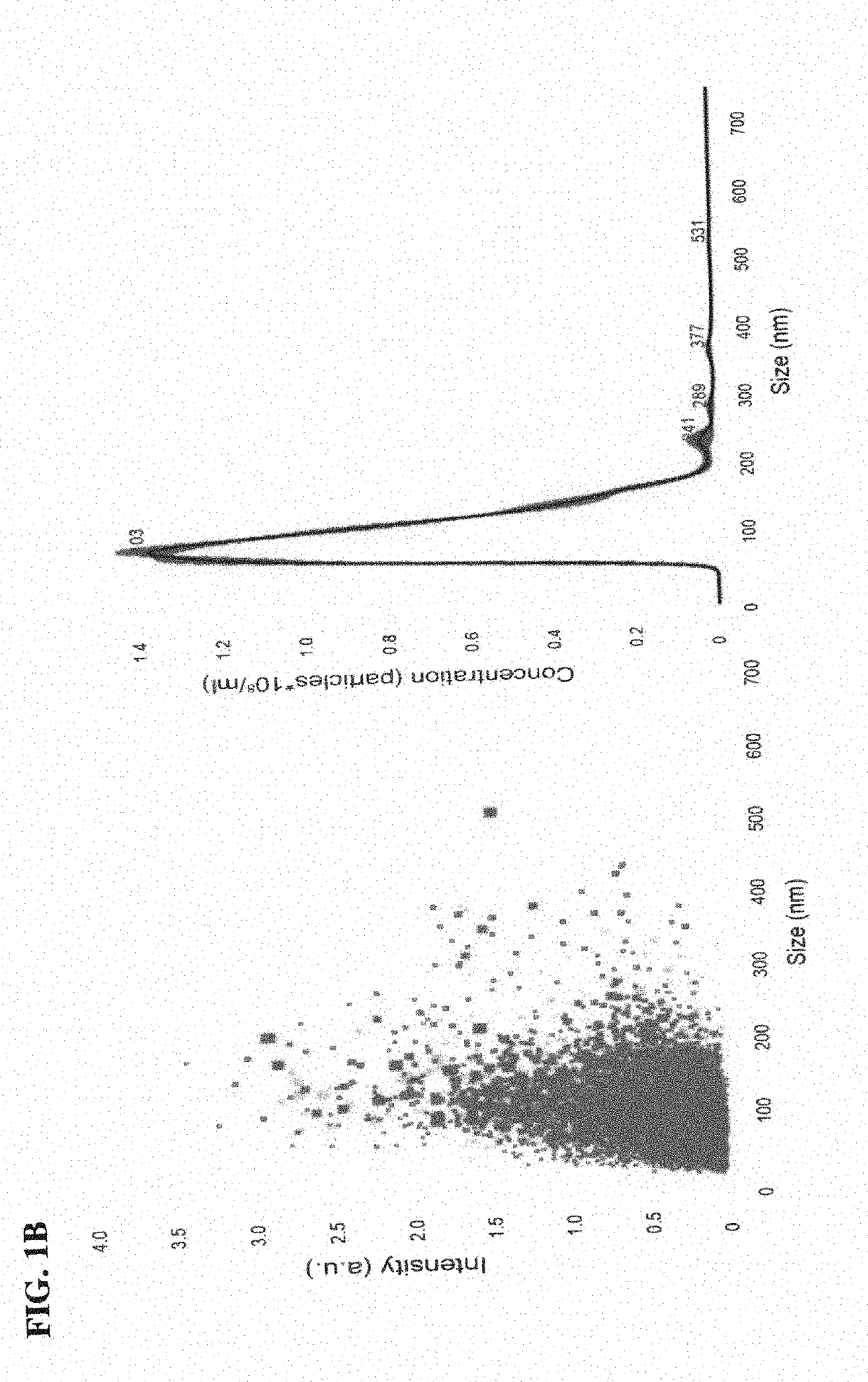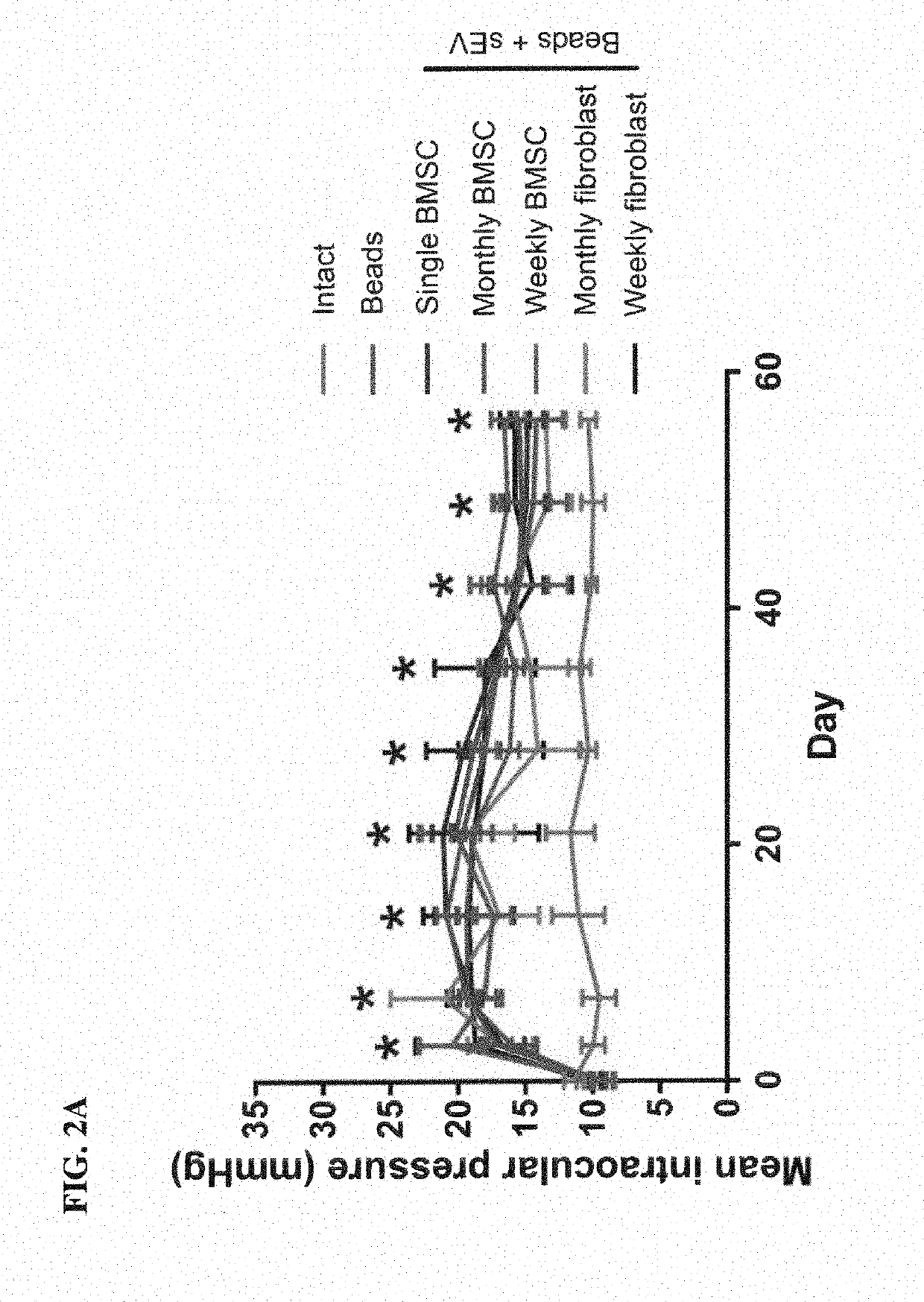Exosomes and mirna to treat glaucoma
a technology of mirna and exosomes, applied in the field of glaucoma, can solve the problems of severe detriment to vision, no neuroprotective strategy currently exists, and dysfunction and subsequent loss, and achieve the effect of increasing the survival rate of retinal ganglion cells
- Summary
- Abstract
- Description
- Claims
- Application Information
AI Technical Summary
Benefits of technology
Problems solved by technology
Method used
Image
Examples
example 1
Methods
[0178]Animals:
[0179]Adult female Sprague-Dawley rats weighing 150-200 g (Charles River, Wilmington, Mass.) were maintained in accordance with guidelines described in the ARVO Statement for the Use of Animals in Ophthalmic and Vision Research, using protocols approved by the National Eye Institute Committee on the Use and Care of Animals.
[0180]Animals were kept at 21° C. and 55% humidity under a 12 hours light and dark cycle, given food / water ad libitum and were under constant supervision from trained staff. Animals were euthanized by rising concentrations of CO2 before extraction of retinae.
[0181]Materials:
[0182]All reagents were purchased from Sigma (Allentown, Pa.) unless otherwise specified.
[0183]BMSC Cultures:
[0184]Human CD29+ / CD44+ / CD73+ / CD90+ / CD45− BMSC (confirmed by supplier; Lonza, Walkersville, Md.) from 3 donors were pooled and cultured in DMEM containing 1% penicillin / streptomycin and 10% exosome-depleted foetal bovine serum (Thermo Fisher Scientific, Cincinnati, O...
example 2
BMSC Secreted Exosomes
[0213]Exosomes isolated from human BMSC and fibroblasts were visualized clearly by NANOSIGHT™ and had a diameter of 100-120 nm, as expected for exosomes (FIG. 1B). Very few larger extracellular vesicles were detected and many of those that were detected were likely exosomal aggregates. No exosomes below 100 nm were detected due to limitations of the NANOSIGHT™ technology.
example 3
Intracameral Microbeads and Laser Photocoagulation of the Trabecular Meshwork LED to Elevations in IOP
[0214]Microbeads delivered ic (Group 2) led to a significant rise in IOP from 9.0±0.5 mmHg (Day 0) to 20.5±2.4 mmHg (Day 3), which remained high till the end of the experiment (14.2±2.0 mmHg; Day 56; FIG. 2A). In contrast, IOP in uninjected eyes (Group 1; 11.4±0.7 mmHg; Day 0) did not change significantly (10.3±0.6 mmHg; Day 56). The injection of exosomes into the vitreous did not significantly affect the IOP in ic microbead injected eyes.
[0215]Laser photocoagulation (Group 3) led to a significant rise in IOP from 9.0±0.4 mmHg (Day 0) to 25.0±5.8 mmHg (Day 7), which remained high till Day 17 (20.1±4.2 mmHg) but returned to baseline by the end of the experiment (11.1±1.4 mmHg; Day 21; FIG. 2B). In contrast, IOP in uninjected eyes (Group 1; 11.4±0.7 mmHg; Day 0) did not change significantly (11.7±1.8 mmHg; Day 21). The injection of exosomes into the vitreous did not significantly affe...
PUM
| Property | Measurement | Unit |
|---|---|---|
| distances | aaaaa | aaaaa |
| distances | aaaaa | aaaaa |
| distances | aaaaa | aaaaa |
Abstract
Description
Claims
Application Information
 Login to View More
Login to View More - R&D
- Intellectual Property
- Life Sciences
- Materials
- Tech Scout
- Unparalleled Data Quality
- Higher Quality Content
- 60% Fewer Hallucinations
Browse by: Latest US Patents, China's latest patents, Technical Efficacy Thesaurus, Application Domain, Technology Topic, Popular Technical Reports.
© 2025 PatSnap. All rights reserved.Legal|Privacy policy|Modern Slavery Act Transparency Statement|Sitemap|About US| Contact US: help@patsnap.com



